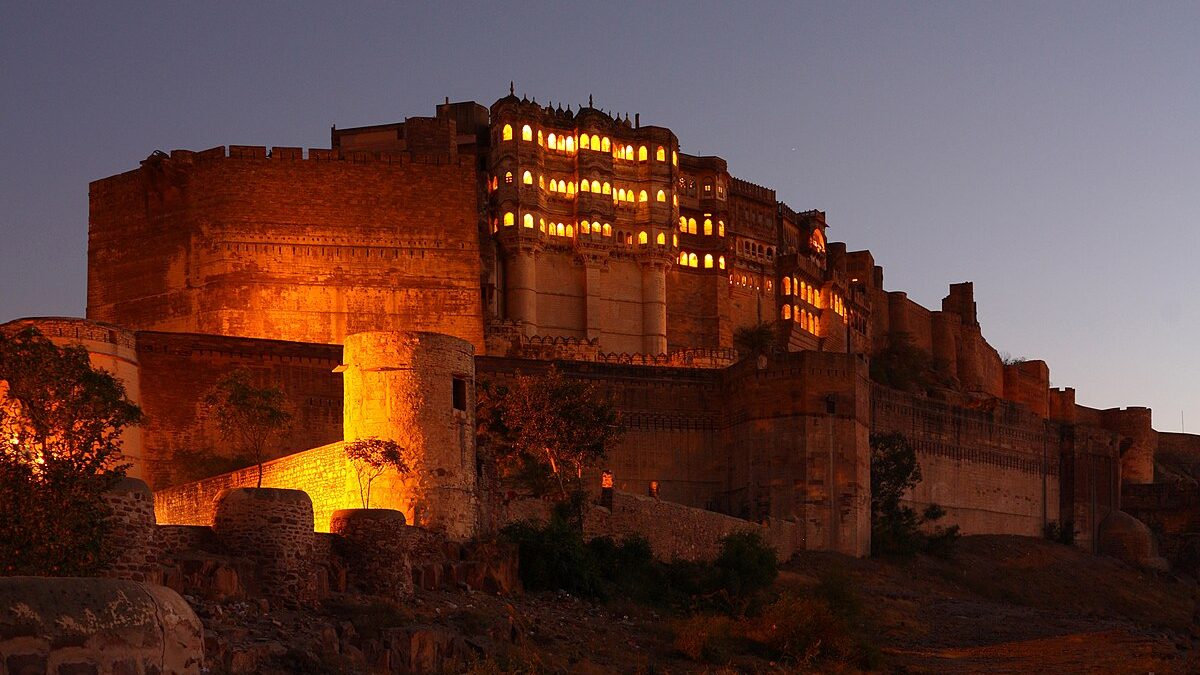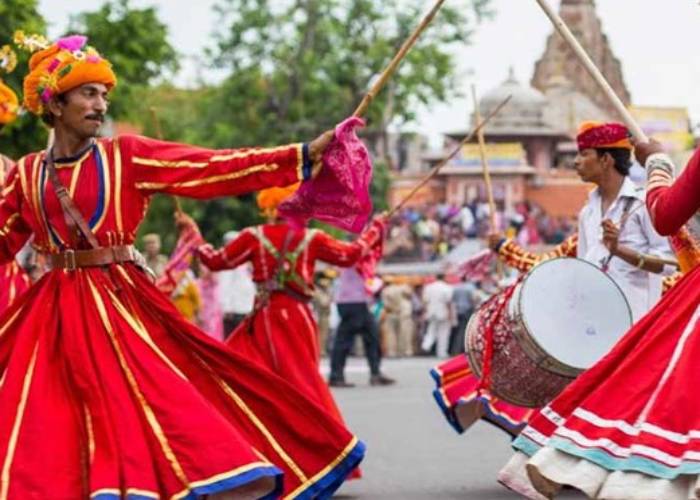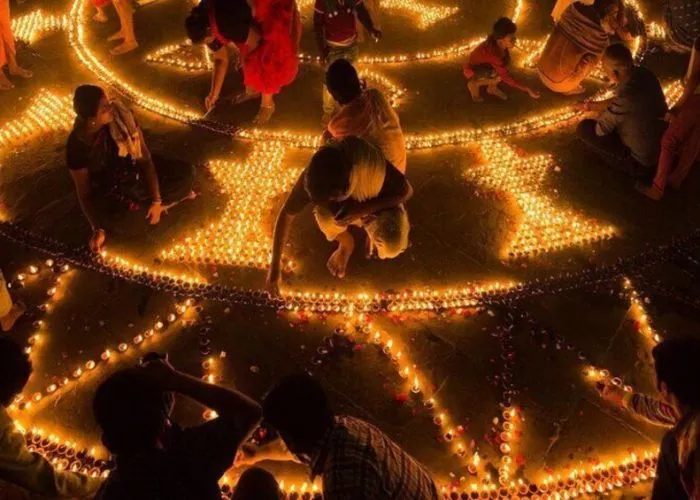Celebrating Diversity with Devotion on Makar Sankranti

India is the oldest and the only surviving civilization since the pre-bronze era. What made it so is the acceptance of diversity of religious, lingual and political beliefs. Though the Indian Subcontinent is a melting pot of diverse ethnicities, languages, cuisines and traditions. The nation not only accepts but thrives in this diversity through its festivals and carnivals. Here we will explore about Makar Sankranti.
One such festival celebrating the change of seasons and agricultural harvests across the country is Sankrant. The important Hindu festival devoted to the Sun God is celebrated under many names across regions. Be it Uttarayan in Gujarat, Magha Saaji in Himachal, Lohri in Punjab, Pongal in South India or Bihu in Assam. And that’s just a few!
The festivals with many names all celebrate the onset of warm summer days after the foggy winters in India. Moreover, Sankrant is also a festival of the sun entering the Zodiac Sign of Capricorn called Makar in Hindi. Hence, the name Makar Sankranti. Observed on 14 January of each year, like its many names, the festival is also celebrated in many styles. It is reflecting the local traditions, foods and agricultural practices.
Let us explore the festivals through the multicoloured lens of Indian diversity.
Welcoming the blue skies with Kites

The festival of the Sun God is most enjoyed by the Kite flying across North India. The kite flying is observed with an electric fervour. Young children prepare for the competitive carnivals days ahead of the 14th January Makar Sankranti. Experience the loud music, people enjoying delicacies and flying kites on their terraces. Even the older generation climbs upstairs to relive their childhood memories of flying kites with friends.
The festival is the enjoyment of the gifts from the Sun. Even kite soaring resembles waking up early in the day to get some rays. Moreover, Kite gliding itself is an exercise while sponging the natural Vitamin D from the Sun. Thus the festival of collective celebration is an epic communal workout in the most fun way possible.
Lastly but not least, where can you experience the greatest kite flying in India? Without a thought, it is the International Kite Festival in Gujarat. Gujarat Tourism inaugurated the first Kite Festival in India in 2012 by the current Prime Minister Narendra Modi. The International Kite Festival in Ahmedabad will be celebrated from 8th January to 14th January till Uttarayan. Book your places and get your Manjha (the special string used to fly kites) ready. It’s time to celebrate the waking up of Gods with some high-action aerial kite combats.
Celebrating communities over Bonfires

Every way of celebrating a Hindu festival comes with a bigger message to learn and teach vital life lessons. Where Kites bring us close to our family and siblings, right the light of the forever lasting sun. There is one more such way of celebrating Sankrant is the communal bonfires.
People make a big bonfire at night, involving dance, music, rituals and exchange of food. It is also a way for people to welcome new brides and grooms into their families. A newborn baby is especially celebrated with great fervour around the bonfire. People also exchange freshly made jaggery, chikkis and sweets made from sesame seeds, and peanuts. These super winter foods are rich in oils and provide warmth on cold January nights.
Just like the Makar Sankranti kite flying is best enjoyed in Gujarat. You can enjoy the best night celebrations around bonfires in Punjab. This is the place where all Punjabis irrespective of caste, and creed celebrate the much-awaited festival of Lohri. The festival begets forgoing all the previous matters and the start of new beginnings. A ritual of letting go of evil and embracing goodness is also performed by throwing sesame seeds and peanuts in the bonfire.
To experience the rich and vibrant heritage of Punjab, Lohri is especially a great time. Who knows you may also get to taste the world-famous Punjabi dish of ‘Saag and Makki di Roti’.
It’s time for some Winter Deliciousness

Talking of food, how can we forget about all the local delicacies enjoyed across different regions? Furthermore, these cuisines and customs are passed down from generation to generation with several harking back well over thousand years. Moreover, the food items are prepared using locally sourced fresh ingredients. A true farm-to-table experience that can’t be matched anywhere else.
According on whatever area of India you are visiting at the moment. You’ll get the best superfoods suitable for your body according to the weather. Like in the cold Northern region, people prepare sweets made of Jaggery, Sesame seeds, wheat flour and peanuts. Sweets are believed to spread positivity and happiness. Interestingly, the ingredients are super beneficial for dry cold weather, nourishing the bodies with much-required warmth, oils and Vitamin E.
Last but not least, the local food items are a celebration of the blessings of God. Many cultures pray for a good winter harvest and smooth sailing for their crops. And though the cuisine may vary people across the country are united by the spirit of the Makar Sankranti.
A time to Share Back with the Community

For a genuine travel experience, one must understand the things that bind all Indians together. It’s the concept of unity amidst diversity. And that spirit is best reflected during the festivals in India. All the differences are forgotten and every festival is an opportunity to start new. Whole communities come together to celebrate their Gods, despite economic, social and lexical differences.
Therefore, during the festival of Sankrant, it is common to see people doing charity and making donations to the underprivileged. The festival is a symbol of hope as the day marks light overcoming darkness. The day of 14th January marks the end of the winter solstice. Meaning the daylight time and dark time in a day. Also, a Hindu is duty-bound to help society, other living beings and the whole world besides himself and his family.
Makar Sankranti is a time for excitement and festivity, as well as a time for introspection and investigation. So if you want to witness Indian culture in a different light; Makar Sankrant is definitely an ideal time to be part of such a magnificent diversity of thoughts, food and celebrations.
Nature is Always a Part of the Celebration

Much of Hindu celebrations revolve around its rivers, flora and fauna. Just like donations to help the needy. In some parts of India, like in the Himalayan state of Uttarakhand, Sankrant is celebrated to mark the return of Black Crows after a painful migration period. Devotees prepare Pinnis, sweetbreads and rice to feed to crows and other birds. Thus promoting harmony with nature and animals.
Similarly, it is also an auspicious time to take a holy dip in rivers like the Ganges. Every 12 years, the biggest gathering of people takes place on Makar Sankranti during the Maha Kumbh Mela. Over 100 million devotees all across the globe gather together on the banks of holy rivers to pray to the Sun God. Such is the magic and pull of the auspicious day of Sankrant.
Doesn’t that make you eager for Makar Sankranti, when all the communities get together to celebrate? Go on a voyage to any Indian state to attend the lively harvest and communal celebration. Join in on the festivities and vibrant fairs of the spirit of humanity. Take a dive into the annals of the most ancient human civilization, i.e. India with Moustache Escapes. So this was the complete blog about Makar Sankranti of Moustache Escapes. Keep on traveling and follow our blog for more exciting and informative travel stories across India.









